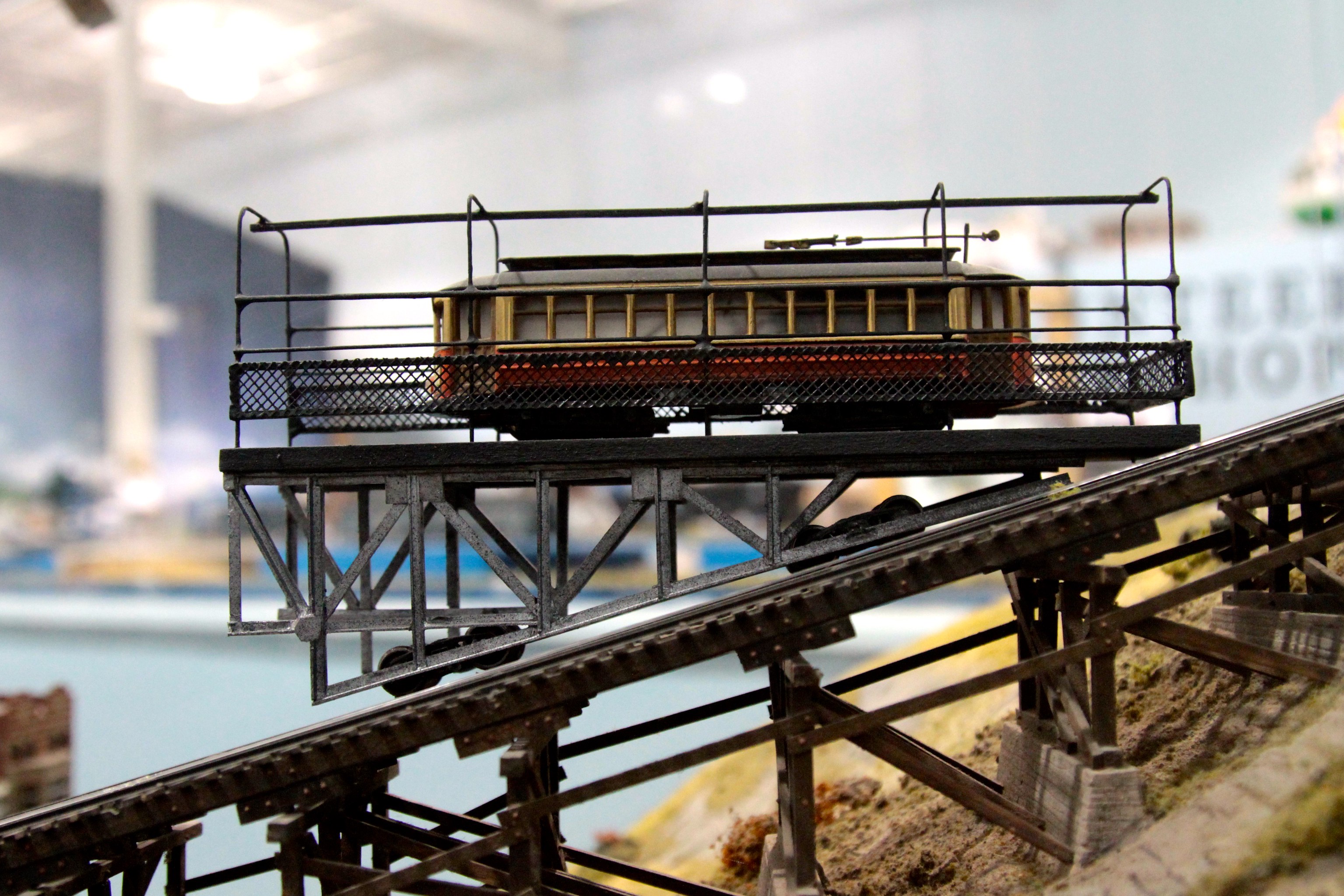You know all those movies you saw where a group of people are in a desperate situation and one person submits a hare-brained scheme and another person snaps his fingers and says “it’s just crazy enough to work!”? I’m wondering if this is one of those moments. Also whether this post should go in the Prototype forum, because one never knows.
My small layout will require a 3 - 4% grade to get my branch track up and over the mainline. I’ve said before I’m okay with that, but another modeler and I were talking about the possibility of a cassette that might hold the entirety of any train I’m likely to want to bring up the branch – at most a mixed local of two freight cars, a caboose, a passenger coach, a baggage combine, and the locomotive, so maybe 4 feet total.
I hadn’t considered this before, and then I started thinking whether it would be <possible | a dumb idea> to invent/introduce the world’s first total train elevator to lift a train in toto or in halves straight up to a second level. Not an incline cable lift against a hillside, more like a vertical lift bridge but with a different level at each end. And not as a hidden device but out in the open, as if it were prototype, a feature of the modelled world. It would look like this:

It would accept maybe half a train, locomotive in front, lift it and allow it to exit at a higher level, then drop again to accept the rest of the train pushed onto the elevator by a dedicated switcher, and then raise that second half. It could be modeled to look like a gargantuan steel bridge.
What say you all to this idea? I’m not really saying I would do this – I don’t believe I have the skill to engineer such a contraption. But I’ve seen some of your photos of vertical lift bridges for tracks crossing in front of doorways. If my longest train is four feet, the elevator would on




